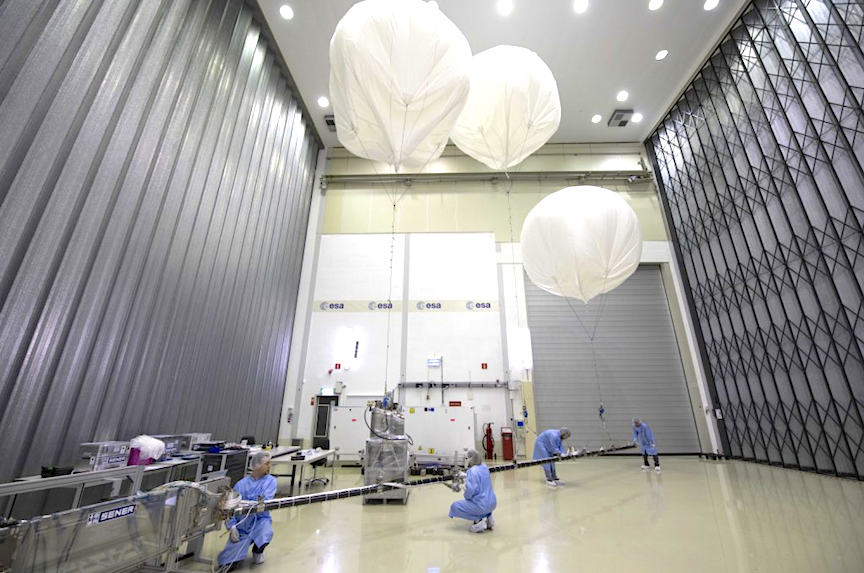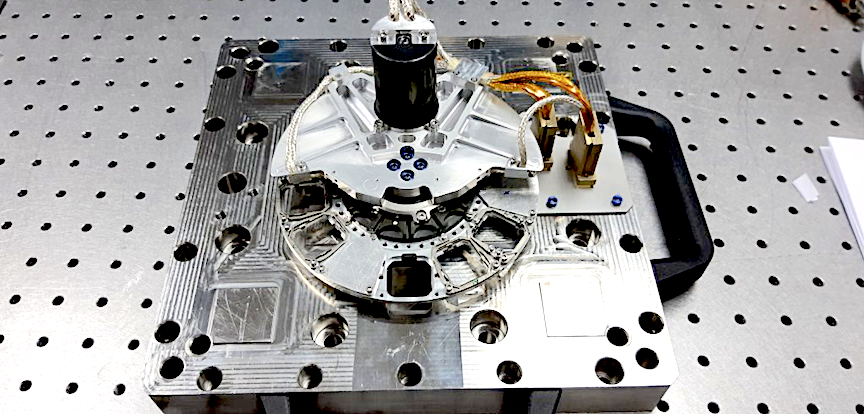
Sener Aerospace and Defense, part of the Sener engineering and technology group, has contributed three key components to the Jupiter Icy Moons Explorer (JUICE) mission that will be launched on April 13. The components that are included in the mission are the magnetometer boom, the medium-gain antenna major assembly (MGAMA), and the components of the Janus and Gala science instruments. Sener has also provided mechanical ground support equipment (MGSE).
JUICE is a program of the European Space Agency (ESA) designed to expand knowledge of the complex interactions between Jupiter and its icy moons: Europe, Callisto and Ganymede.

The boom has proven to be a technical challenge measuring 10.6 m long when deployed, it is the longest boom made for an ESA project to date. Sener Aerospace and Defense was responsible for the design, manufacture, verification and integration of the magnetometer boom, the purpose of which is to move some of the instruments required for the scientific experiments away from the spacecraft in order to prevent magnetic interference. It will house five instruments that are needed to conduct two wave characterization experiments, one for magnetic waves, called J-MAG, and the other for radio waves, called RPWI.
In addition to its length, the design of the boom was conditioned by a series of extremely demanding requirements, such as the range of temperatures and radiation levels to which it will be subjected, magnetic cleaning to avoid distorting the magnetometer readings, the mass available, and more.
The system simultaneously deploys the three segments that make up the boom. These segments are each driven by an independent deployment mechanism. The deployment speed is controlled from the satellite interface mechanism through a viscous damper. This damper directly controls the first mechanism, while the other two are controlled using a system of pulleys and retaining cables. The functional check was carried out with help from three balloons, each of which supported the weight of a segment of the boom from its center of gravity. The result simulated the weightless conditions in which the system is designed to operate.
Sener Aerospace’s three other projects for JUICE include; Medium Gain Antenna Main Assembly, or MGAMA: which includes the main and secondary antenna reflectors, feeder, a boom, rotary joints, the pointing mechanism, control electronics and all the interconnecting wiring; this antenna is a key component for communication between the satellite and ground stations, since it will be used to send information and receive commands from the control center. The medium-gain antenna also plays a key role in the radio-science experiments, which will help investigate the geodesic and geophysical properties of Jupiter and its moons, especially Ganymede.
It is a dual antenna operating in the X and Ka bands whose main reflector is 0.5 m in diameter and 0.7 mm thick. The selection of materials and surface coatings is critical to ensuring the integrity and performance of the equipment under extreme thermomechanical conditions.

The control electronics of the mechanism receive and process the motion commands from the computer on board the satellite. It includes the control algorithms to follow the required motion profiles, and returns telemetry on the status of the antenna and its components.
In addition to dealing with the technical complexity of the device, Sener Aerospace, as the design authority, successfully led the consortium of companies from multiple countries that took part in the project.
Components in the JANUS and GALA science instruments

Sener Aerospace and Defense is also involved in two instruments, alongside the Instituto de Astrofísica de Andalucía, IAA (the team of researcher Luisa María Lara) consisting of the JANUS instrument, which is the high-resolution multi-spectral camera that will acquire images of Jupiter’s atmosphere, mainly to study its dynamics, and the surface of the icy moons to determine their composition and structure. Secondly the GALA laser altimeter that assists with understanding the ice tectonics of the moons by using topographic data, the subsurface structure by measuring the tidal response, and the roughness and albedo of the surface on a small scale.
Specifically, Sener Aerospace and Defense did the detailed design, implementation and validation for the filter wheel module (FWM) on the JANUS instrument with its control and power electronics, and for the power supply of the altimeter on the GALA instrument.
Sener also contributed to the design and manufacture of a series of mechanical ground support equipment (MGSE) for the assembly and testing of the satellite’s solar panels.
